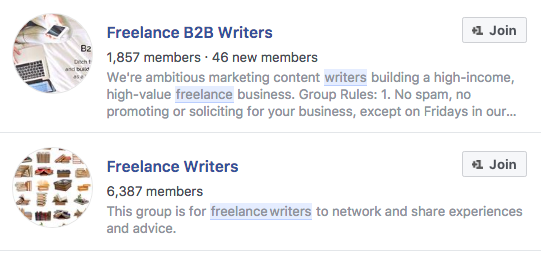Here’s a confession: getting new freelance work can be hard.
That’s true even for established freelancers and those who are trying to level up.
More often than not it’s this part of the process that’s going to give you the most frustration.
Which kinda sucks because, you know, it’s preeeeeetttty important!
Without clients, it’s really hard to make any money, unless you’ve got passive income coming in or a successful hobby hacking business up and running.
The advice can be kind of vague too. Believe me, I know, I’ve given it myself.
So in this post, I wanted to break it down. Below you’re going to find some tried and true methods to get more freelance clients. These are real deal, tried and true methods that me, Sean, and hundreds of other people in our Location Rebel community have used to work from home.
You might find a handful stand out to you, or hey, you might have a few other ways I haven’t mentioned (if that’s the case, feel free to share in the comments!).
Hopefully, with this post, you’re going to come away with some concrete approaches to getting new clients that you can put into action today.
And if you’re just starting to consider freelancing? Then I’d check out this post first on how to become a freelance writer.
1. Use Job Boards to Find More Clients
This is pretty obvious.
You hear a lot about the UpWork’s of the world, but there’s a whole world out there with lots of options. Some courses and groups will post job boards too, we have a mini board in Location Rebel Academy, for example.
There are lots of good job boards out there where you can snag some good clients. I’ve got two clients I’ve been working with for years off the ProBlogger job board.
Remember the main thing with job boards is that you’re competing against a lot of other people. That means if you send off a cut and paste generic email or cover letter you’re not going to stand out.
Here are a few things I like to do when applying for work from a job board that has helped me land some pretty good gigs:
- Read all the instructions: Yup, seriously. If someone tells you to put “I love mangoes” in your headline. Do it.
- Think of their needs first: Most of the time, the client doesn’t care about your hobbies or where you went to school, they want someone who can get the job done at a high level reliably. Prove you can do that.
- Keep it short and to the point: I applied for a job the other day where the request was to keep my entire ‘pitch’ to 5 sentences. I did that, got thanked for following directions and have moved on to the second round.
- Add value somewhere: Since I’m a writer, I usually pitch content ideas and sometimes just headlines to make them more intrigued. Take a good look at their site and come up with 2-3 ways you can help them right now that will make you stand out.
Work on a good pitch email and save it. You’re going to come back to it often. Tweak it and keep track of what works and what doesn’t.
Action Step:
Find the best job boards in your industry and schedule time in your calendar each week to browse them. If you’re a freelance writer, check out some of the boards in this post.
2. Reach Out to Friends and Family
Congrats, you’re in business, so tell people!
Advertise to your friends and family that you’ve got your own business up and running and you’re looking for work. At the very start, you might be able to cut a deal with people where you’ll do a bit of work for a reduced rate. That’s one way to get going in your freelance career.
Don’t go crazy with this, keep it simple. Remember, outside of the online world bubble most ‘regular’ people have no idea what you do. So explain it to them simply in a way that makes it easy to understand.
Here’s an example, set up a Facebook post that says something like:
Hey everyone! For the last few months, I’ve been writing for law firms and have gotten really positive responses. I’d love to keep expanding my client base in this area. If you know anyone who has any law firm connections here, I’d love if you gave me a shoutout.
Lots of times there will be a friend of a friend who happens to be in need of what you’re offering. So don’t be shy putting yourself out there. Your friends and family are going to be great allies in helping you get the word out.
Action Step:
Get connecting. Hop on the phone, send a text, shoot out an email, post on Instagram. Let your friends and family know that you’re looking for clients and see what pops up.
Join over 40,000 people who have taken our 6 part freelance writing course. Sign up below and let’s do this together.
By entering your email address you agree to receive emails from Location Rebel. We'll respect your privacy and you can unsubscribe at any time.
3. Tap Into Your Network
This is basically the same as above, but instead of asking friends and family ask your network. Let people who are in the online world know that you’re looking for work. Jump on forums, the people in your mastermind group, Facebook groups, don’t be shy.
This has worked well for me too. Sean has passed my name on for freelance writing gigs a couple of times (which I’m always thankful for!).
It’s also pretty common for me to get an email from someone in my network asking if I know someone who can do a small gig or if I know any new writers. So I’ve recommended people are super active in the LR forums and doing good work (hint, hint).
Don’t underplay the ability to find small projects from people, especially people who are fellow freelancers. Not every job, especially to start, has to be a five-figure gig. I love taking smaller projects and over-delivering, which puts me in great standing for either more follow up work from the same person, or I’m at the top of the list of potential referrals.
Start small, knock it out of the park, and you’ll have a much better standing to come back and ask for more work later (more on that below).
Action Step:
Make a list of people in your immediate network who have some online experience or have a bigger network than you do. Work on building a relationship with them and then make the ask to see if they need help on any projects.
4. Ask Current Clients for Referrals
This is something I’m kinda shocked that people don’t do more often. If you have even one client right now who is paying you for your work then you should ask them if they can refer you to anyone else.
It doesn’t have to be a competitor or even in the same industry. If you’re a writer or a social media pro, SEO person, or web designer you can do work across a number of industries.
Here’s a sample letter you can start with. As with any email templates in this post, make sure to tweak it to make it as personal as possible:
Hi Current Client,
I’ve enjoyed working with you the past few months on your email marketing campaigns. If you’ve been happy with the work I’ve done, I hope you’d be willing to pass my name along to anyone else you know who is in need of similar work. Do you have anyone in mind?
Thanks,
You
Plus, a referral is a warm lead. A potential new client is going to be much more receptive to you if they know you were referred by someone they already know and trust.
Action Step:
This week (today) ask your current clients for referrals. This post has some good tips you can use. Then, set a calendar reminder to do the same thing again next quarter. Repeat as necessary.
5. Ask Current Clients for More Freelance Work
Without a doubt, the easiest way to get more work is to have someone who is already paying you give you more. Too bad more people don’t think of this as the first place to go.
Remember when I said how I love taking on small projects to start? That’s because it provides the perfect opportunity to ask for more work once the job is done.
I’ve been able to take a number of clients who hired me for one-off writing gigs and transform them into extended jobs with thousands of dollars of extra work.
For this to work well you need to have a strategy. Mine is to essentially remind clients of this:
I use a three-pronged approach to set the stage:
- The primary goal is to deliver what they want. If you can’t do this, they aren’t going to care about working with you again. I make sure I’m giving them something that they are going to be really happy with. First impressions matter here.
- I surprise and delight. This means I will do something special. That might be delivering the project a day early or adding something special to the content like a case study while keeping it the same price.
- I’m easy to work with. Everyone says this about themselves, but it’s not always true. That means I respond quickly to emails, communicate effectively, am open to suggestions and feedback, quickly make any necessary tweaks, and stay friendly and positive throughout.
Once I’ve done all that it pretty much ensures that the client is happy. Sometimes, they might offer you more work on the spot. If they don’t, that’s fine, I always follow up with an email citing all the other ways I can help them.
Something like this:
Hey Client,
I know you hired me for one article a month. But, I wanted to also let you know that I can help you with copywriting, email campaigns, ebooks, whitepapers and long form guides too. I took a look at the opt-in on plumbing fixtures, and have a couple ideas on how it could be improved to really wow readers. Can I send over an outline?
Thanks,
You
Since I’ve already laid the groundwork during the first project, it’s basically like having a warm lead. A lot of times, this works for me. It might not be right away, but a month or so down the line they come back for more.
You can also just be straightforward and ask for more work from current regular clients too. Most of the time when I do this, I’ll sweeten the pot by adding in a few pitch ideas to show I’m keeping up on their site.
Once again, this is a super simple email that can look something like this:
Hey Client,
I was reading an industry magazine the other day and came across xyz article, I thought that might be an interesting topic to cover on your blog.
Here are three pitches, let me know if any (or all) of these strike an interest:
Pitch 1, Pitch 2, Pitch 3
Thanks,
You
An email like this has two bonuses for your client. First, it shows you’re keeping up with what’s happening in the industry. Second, you’re already doing the legwork, you’ve come up with the topics, and ideally keywords, so all they have to do is reply with a quick yes and you can get writing.
Action Step:
Make a list of your current skillset. Work on expanding on just one or two of them over time so you’re comfortable offering them since you know you can deliver. Use these extra skills to help showcase how much extra value you can add to your client beyond what they hired you for.
For regular clients where you want to get more work, find a few trusted resources in that niche or industry and read through them weekly so you can come up with pitches to send to these clients.
6. Keep in Touch with Past Clients
Some clients might work on a project basis. I have one that works this way. He might send a request for 3-4 things for me to write and call it a day. Sometimes, I’ll hear back from him a few weeks later with more work, other times it might be a few months.
When it gets to the two-month range and I haven’t heard from him, I send a super quick follow up email. It looks like this:
Hey Client,
Hope all is well. I wanted to check in and touch base. I have some available time over the next few weeks, happy to get started on any writing work you might need.
Talk soon,
Liz
Pretty much every single time I do this I get a response offering more work within a week. I really focus on keeping in touch with this client in particular because he’s great to work with, which makes the process really enjoyable.
You can also try a modified version of asking for more work for this too.
If they don’t have any work at this time, that’s ok (remember, stay friendly!), just repeat the process at a later date.
Action Step:
Make a list of all your past clients. Send an email to each of them like the one above asking if they have more work for you. Once any project finishes set a future date on your calendar to follow up with that client.
7. Be Active on Social Media
Let potential clients know you’re currently for hire on your social media channels too. Put it in your profiles and bios.
If you do a quick search of ‘hire me” on Twitter and click people, you can see all sorts of bios with people who have that in there.
You can do the same, or set up an automated post that cycles through every few weeks letting people know you’re for hire and looking for work.
Also, use social media to search for jobs too.
I’ve come across a bunch of gigs on Twitter. There’s no rhyme or reason to this exactly, but keep your eyes peeled.
Sometimes editors of sites will announce they are looking for pitches and to get in touch. Tap into the search feature again with terms like “pitch me” or “accepting pitches.” You can also set up a Twitter list of editors for the sites you’d love to work with and use that to be right on top of when they are searching for more work. Lots of times they will share posts from others, so word can spread.
I’ve also really gotten into LinkedIn as I focus more on B2B brands. It’s a great place to both find work and build a network. As I’ve written more content on there I’ve had my connections grow and have been approached a handful of times about potential writing work.
Action Step:
Go to search.twitter.com and do searches of all the hiring phrases you can think of. Try ‘we’re hiring’ or ‘work with us’ for general searches. Also, get specific about what you’re looking for, i.e. editing, photoshop, translation, etc. Make a list of a bunch of the sites and publications in your niche where you’d like to work as well as the editors running them and keep an eye on their posts.
8. Go to Networking Events (Even if You Hate Networking)
Sean has always been a big proponent of this one. When he was first back from Asia and looking for freelance SEO work, he’d go to networking events for complementary industries. He’s told the story of how he went to one meetup for social media pros and got offered 3 freelance SEO gigs on the spot.
Think about it this way, if you’re a writer looking for a job, you might want to hit up a graphic design meetup. Chances are these people have clients who are looking for writers in addition to needing design work.
For freelancing roles like writing, copy, SEO, email marketing, conversion optimization, web design and development, you can hit up pretty much any sort of meetup and encounter a few people who are likely going to need your services at some point.
Also, don’t be afraid to hit up some of the bigger conferences in your niche too. While these can be expensive, targeting just one of these, especially if you stay niched focused, can reward you with huge payoffs.
I went to the ASJA Writer’s Conference for the first time a few years ago. I didn’t know anyone there, but hands down it was the most impactful conference I’ve been to in terms of helping me take my B2B freelance writing career seriously.
Action Step:
Scour sites like meetup.com for local events. Starting in your hometown is a great way to get your feet wet. If you live in or near a big city there will be tons of opportunities. Also, tap into your chamber of commerce and see what they’ve got cooking. Any members are all active businesses who are invested in connecting with other local brands.
9. Find Special Interest Groups
It seems counterintuitive, but you can get a lot of freelance job opportunities by joining groups of people who do what you do. Rather than thinking that you’re always going to be competing against each other, it’s actually the opposite, especially with more successful freelancers.
I’m in two groups for writers.
One is paid, so you get a higher caliber of freelancer, everyone in there is a professional writer who has been doing it for years. Many of them will post up the information of new people who reached out to them that they can’t take, or old clients that they are moving on from as they get paid more.
The other is only for women freelance writers. A huge portion of this group is just posting jobs, some because they are the contact person, others that they happen to see online. I was able to get on a contributors list for a pretty big name site through a posting in this group.
Facebook is a great place to start for this. I typed in “Freelance writer” and searched groups and came across dozens of groups to join.
Do a search for your niche and you’re likely to come at least one group you can join.
You can also do this for groups in your industry or niche too. For example, if you’re an insurance writer, go on LinkedIn and jump into industry groups, they are chock full of potential clients!
If you’re stuck on a niche, check out this post, it might help you out.
Action Step:
Look for groups in your niche. If they are paid, that can even be better because people in there are serious about it. Be active in the forums, and helpful. Make yourself seen and potential work can come your way. If you want to learn more about building a following through Facebook groups, check out this post.
10. Create a Partnership Network
Referrals aren’t just for clients, you can also create your own network around people with different skillsets. I learned this idea from Peter Bowerman of the Well Fed Writer, check out this podcast he did on the concept.
If you’re in a mastermind group with a writer, web designer, copywriter, and social media manager (find more common Location Rebel jobs here), then you’ve got the makings of the perfect team right there.
Use your group to pass along the referrals of the clients you work with. If you’re a writer and your client needs a designer, mention you have the perfect person and so on. You can work out a fee structure if you want, say 15% for referrals to make sure everyone is getting something out of it.
Action Step:
Make a list of people in your current circle with complementary skills that you can get one of these networks up and running with. Get in touch and work out an agreement that is fair to both parties.
11. Get Comfortable Cold Pitching
Yuck. No one likes this one, right?
The mere thought of having cold pitching next up on my to-do list after lunch used to have me shaking like…
The truth is, cold pitching is a pretty solid part of any marketing plan. As much as everyone hates to do this, it’s part of the business. If you feel a lot of stress at even the thought of cold pitching, the worst thing you can do is avoid it.
I really feel like this is like building muscle. You start small, maybe it’s one a day, and build up your confidence (plus your ability to accept rejection) and build from there.
I like to do this by starting locally. At the very least, you have the connection of living in the same area, that tends to hold more weight to a potential client than a cold pitch from across the country.
Plus, I’m a big fan of getting in touch with those ‘unsexy’ local brands that can actually end up being quite lucrative. If you want some advice on your cold pitches, take a look at our ultimate cold email checklist.
Action Step:
Start making a list of local companies to pitch. A great place to get information is by checking out the website of your local chamber of commerce. Look at sites like Manta and LimeLeads too. Oh, and we have a guide specifically created to help you connect with influencers via email.
12. Send Out Letters of Introduction
Another place you can look for work is with marketing agencies. There are a bajillion of these around the world and many of them work with legit big name customers.
These are perfect places to send out Letters of Introduction (LOIs) that introduce you as a writer who is looking for work. LOIs are a bit more casual compared to cold pitches. It’s basically like raising your hand and saying hey, here I am with these skills, are you interested?
Here’s a sample LOI you can use:
Hi,
I’m a local freelance writer with a focus on commercial real estate. I’ve worked in the industry for 3 years as an analyst. You can find my work on site a, site b, site c. Do you work with freelancers? If so, I’d love to chat more.
You can find my portfolio here.
Thanks, you
That’s all there is to it. Remember, these are just simple introductions.
Personalize where you can add a bit of context but no more than a sentence or two is needed.
Here’s a ton of agency lists that you can use to get started:
- Clutch.co Agency List
- Themanifest.com Agency List
- Agencylist.org
- Digitalagencynetwork.com Agency List
- Upcity.com Agency List
Action Step:
Start writing up a few different LOIs. I have one for each niche I’m trying to target and I save them on a gDoc so when I send out my emails I just paste them in there. You can start locally which can help give you something to talk about and move on from there.
13. Create Profiles on These Sites
There are a few big name legit content marketing sites out there that can provide you with tons of work potential that is with good clients and pays well.
There’s only one small problem, they don’t let you search through the sites for jobs. Instead, potential clients and editors come to you.
Because there is no immediate gratification that way, a lot of people ignore these sites. Don’t make that mistake because you could end up missing out.
Here are the sites:
You can read more about Contently here.
What you need to do is take the samples you do have and create portfolio profiles on each of these sites. Yes, it will take a little time to upload and add images and descriptions and all that jazz, do it anyway.
What is critical to get right with these sites is they operate on a keyword algorithm search, similar to Google. So, when you create your profile, hammer home the keywords you want to be found for in your about section and in the descriptions of your sample pieces.
Potential clients and editors do a search for keywords and then they go through the writers who do pop up. If someone, hopefully, you, is a good fit, they’ll reach out and offer you a spot on the writing team.
Action Step:
This one should be pretty obvious. You want to set up a profile on each site. Set aside time to do each one. Also, make a note on your calendar, be it monthly or quarterly, to go in and update your profile and pieces so it’s up to date. It took me about 6 months after creating profiles on both Contently and Skyword but I’ve gotten a lot of good consistent clients through both for the last few years.
14. Explore Apprenticeships or Remote Work
Personally, I’m a big fan of the apprenticeship model (it’s how I got this job!). I think by working with someone who knows what they are doing as an apprentice you can actually learn a ton, build a huge network, and get paid at the same time.
Sounds like a winning proposition, right?
So keep your eyes peeled for these because there are a ton of opportunities out there.
Lots of entrepreneurs today actually advertise for these. A site like Get Apprenticeship has a newsletter with available listings. You can also build up a really good relationship with someone whose work you admire and go for the ask too.
Much the same can be said for remote work. Sometimes, these situations are the best of both worlds. You can find a steady job but have the freedom to work from home. These are becoming more and more popular, so don’t discount them as a viable option!
Action Step:
Look for the people who are doing what you’d like to be doing in the future. Don’t aim for the big shots, but the people who are a few steps ahead of you. Reach out and start building a relationship so you can ask about being an apprentice. For remote jobs, pay attention to job boards and social media to start.
15. Optimize Your Website
Your freelance writer website is one of the most valuable parts of your business. But, you might not be using it to its full advantage.
So you need to optimize your website to get the best possible results.
And we’re not just talking about having a nice portfolio or a great about page, nope, we also mean with search engine optimization (SEO) too.
If you have a niche or want to position yourself as a generalist writer in a specific geographic region you want to use your SEO skills to your advantage.
Now, when a brand wants to hire a writer they usually do something like this: go to Google and type in “keyword writer” or “keyword location writer.” Then, when the results pop up, they click on the websites of the first few people on the first page and likely end up hiring one of them.
So the person who is at the top of the first page for those keywords is getting potential clients coming to them all the time. You don’t want to miss out on this!
Here’s what you can do:
Let’s say you’re a car insurance writer. What you want to do is take the keyword “car insurance writer” and make that your focus. Dig into a bit of keyword research (we recommend SEMRush for that) and check out who is sitting at the top of the rankings for your term.
Next, go through your site and optimize your pages and posts, don’t forget your home page, for that keyword. Don’t go completely nuts and jam into every other sentence but add it a few times in key places.
If you want to take it a step further you can add your location to this too. So instead of trying to rank for “car insurance writer” which might be more crowded, you can aim to be at the top for “Austin car insurance writer” and try to snag more local work.
Either or both of these approaches can help you bring in clients while you focus on other areas of outreach.
Action Step:
Go through your site and see where you can optimize it for your keyword niche, location, or both. This isn’t something that you’ll get results with overnight, SEO is more of a long term play. But if you’re focused on that keyword you can get your site and blog optimized for it and start getting some traffic come your way.
Time to Start Searching for More Freelance Jobs!
Hopefully, you now have some good ideas of where to look for clients and some solid action steps to help you find more freelance work.
The hardest part of doing this is sending out those first few requests. But it’s a lot like building a muscle, the more you do it, the more second nature it will become.
Make a weekly (yes, weekly) plan to hunt for work. You don’t want to let up on this, especially at the start, or you’re going to run into dry spells. As you get more experienced and grab some really good clients, you need to always be looking for work can dramatically decrease.
If you want more hand holding and step by step help building your freelancing career and finding clients, check out our Location Rebel Academy community.
And if you’re stuck trying to decide what kind of business you want to run, check out this post 17 Work from Home Jobs You Can Run from Anywhere (And Start Today) and find a way to create your dream job!
Good luck!
Note: This post has been updated as of March 2020.
Liz Froment
Liz Froment is a full-time freelance writer and the one who keeps Location Rebel running like a well-oiled machine. If she's not writing something informative or witty for her clients, she can most likely be found reading a good book.Join over 40,000 people who have taken our 6 part freelance writing course. Sign up below and let’s do this together.
By entering your email address you agree to receive emails from Location Rebel. We'll respect your privacy and you can unsubscribe at any time.






Nice article, Liz. An eye opener in many sense, espicially point 11 about cold pitching.
I also liked 10 about the mastermind group. On my website, planetofdisobedients.com, I have a community of artists of various sort. I could use your advice to monetize the community.
Thanks 🙂
Thanks! A mastermind group can be a great place to find clients (in addition to all the other benefits)! Having a group of people who are looking to work together is always a great place to start.
Absolutely.
But the problem with me is that having only so much time at hand, I am confused if I should continue building the community for now or should I jump into the monetization game.
Further, I don’t know if I am really concerned about the productivity or if it is just my “lizard brain” being afraid of trying something that might not work. :p
Personally, I think nurturing a community is really important first. After all the more engaged people you have who love your community and what you provide, the more willing they are going to be to part with their money to help you. It goes along with the 1000 true fans theory.
The answer usually is the lizard brain, we’ve all been there! 🙂
That was quite reassuring, Liz. You are right. I need to put all my efforts nurturing and building up the community first. Thanks a lot! (y)
Great article Liz!!!
Thanks, Nick! Hope some of these work for you too.
Thanks Liz, for making time to write this long post.
I find it helpful and well-timed.
I do many of the things which you suggested in here but must say that your approach is quite unique. This will surely expand the options at my disposal.
Lastly, I look forward to reading more from you in future.
Regards
Thanks Hafiz, appreciate the kind words! Glad to hear you’ve come up with a few new approaches.
Hi Liz
Great post I must try some of these as I mostly cold pitch at the moment but it doesn’t seem to bare much fruit.
Thanks, Tyrone! Sometimes you have to have a lot of irons in the fire for things to come through. But doing a lot of outreach generally pays off (sooner or later)!
It can be a tough old world, that’s for sure. Paradoxically those of us who work in the ‘Communications’ game:
Writers
Web Developers
Social Media Specialists
Can have the devil’s own job trying to break through to the slumbering masses of digitally naive, and confused business owners out there!
There are just so many offerings, and hyped up memes, garish banners all proclaiming to solve their problems that presenting a clear, honest offering of authentic services can be swamped.
Hi Mike, You’re right about that. It can be hard to break through which is one reason why I really like to keep in touch with those current and past clients and focus on that because the warm lead can really make the big difference.
I think most people are afraid to ask for referrals because they’re afraid of bothering their clients or something. But rest assured that if you do good work for your clients, they’ll surely have no problem with you asking something like that and will even love to give you referrals if they have anyone to refer you to 🙂
I talk a lot about the transcription industry on my FB account, and I’ve been able to get work as a result of that.
I have also done some cold pitching (it needs one to have a lot of patience and persistence, so I realized) and gotten two clients that way.
Great article Liz!